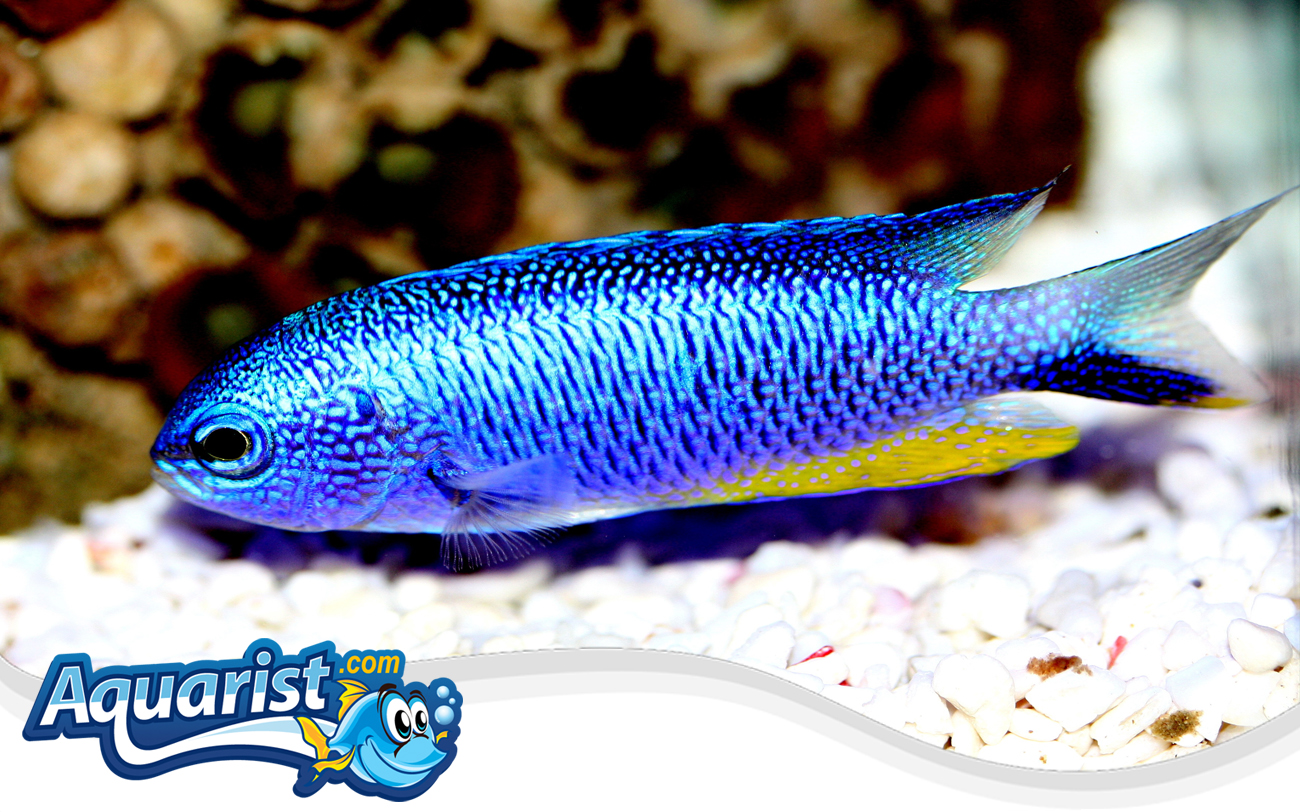Overview
- Native to the Indo-Pacific, often found in coral reefs and shallow lagoons.
- Distinctively bright metallic blue body with vibrant yellow anal and tail fins.
- Known for its active, playful behavior and striking appearance.
- Hardy and suitable for beginner and intermediate marine aquarists.
Feeding
- Omnivorous diet; naturally feeds on algae, zooplankton, and small marine invertebrates.
- Easily accepts marine flakes, pellets, mysis shrimp, brine shrimp, and spirulina-based foods.
- Feeding small amounts multiple times daily promotes optimal health and vibrant coloration.
- A diverse diet is important for balanced nutrition and overall vitality.
Habitat
- Ideal for moderately sized aquariums (minimum 30 gallons) with ample swimming space and structured live rock.
- Stable and mature aquarium conditions essential for long-term success.
- Provide plenty of hiding spots, coral structures, and live rock formations to mimic natural habitats.
- Moderate water flow and effective filtration are key to maintaining water quality.
Fish Care
- Preferred water temperature: 74-80°F (23-27°C).
- Recommended pH: 8.1-8.4; specific gravity: 1.020-1.025.
- Hardy species but sensitive to rapid changes; regular water testing and consistent aquarium maintenance necessary.
- Monitor for common marine diseases and parasites; prompt intervention ensures best outcomes.
Compatibility
- Semi-aggressive; best kept with similar-sized or slightly larger, robust tank mates.
- Generally reef-safe; compatible with corals, but may exhibit territorial aggression toward passive or smaller fish.
- Recommended tank mates include clownfish, dwarf angelfish, tangs, and hardy wrasses.
- Territorial nature requires careful introduction and adequate space to minimize conflicts.
Aquarium Behavior
- Very active swimmer, frequently exploring and interacting with aquarium surroundings.
- Displays territorial behaviors, particularly in smaller or overcrowded aquariums.
- Often engages interactively with caretakers, particularly during feeding.
- Clearly defined territories and ample hiding spaces help reduce aggression and stress.


